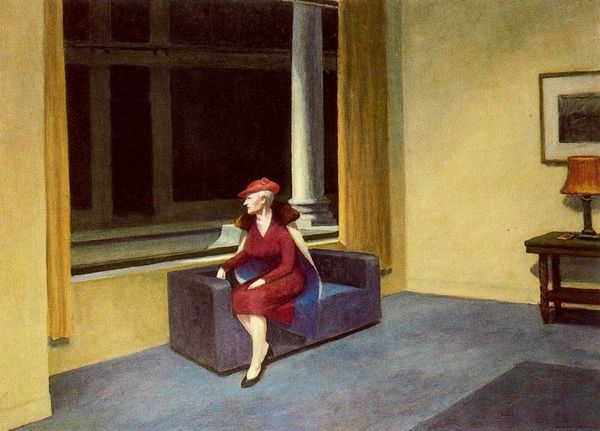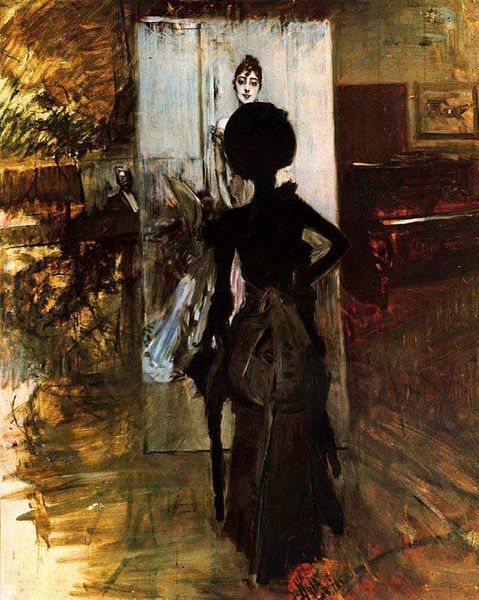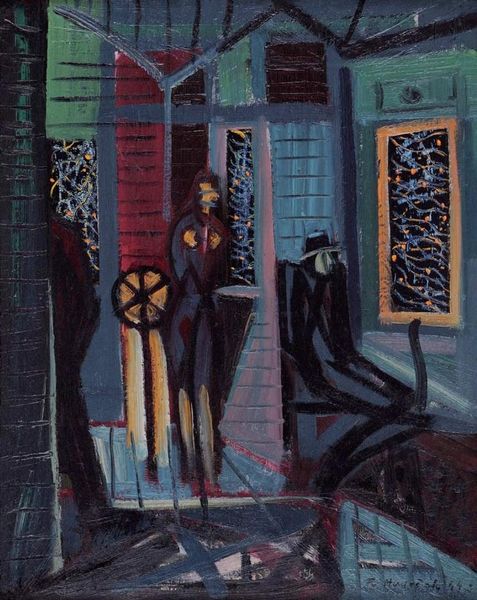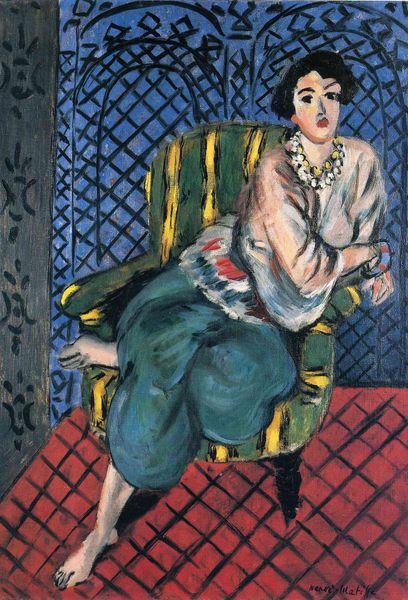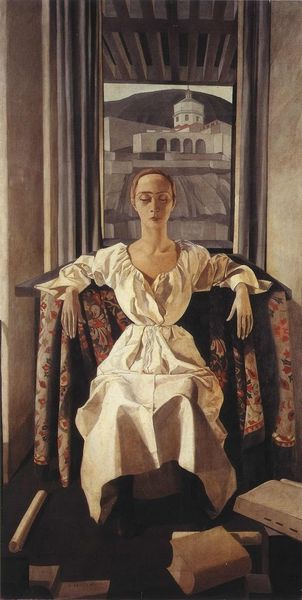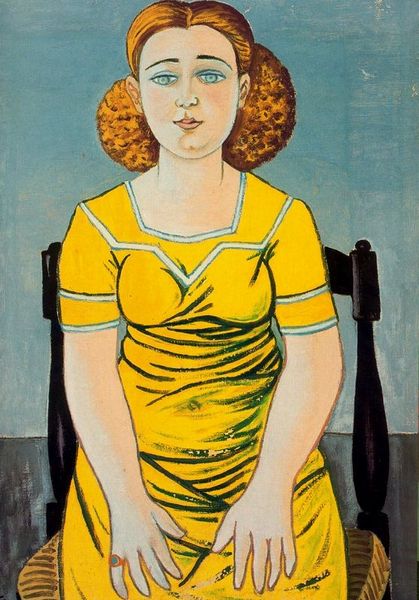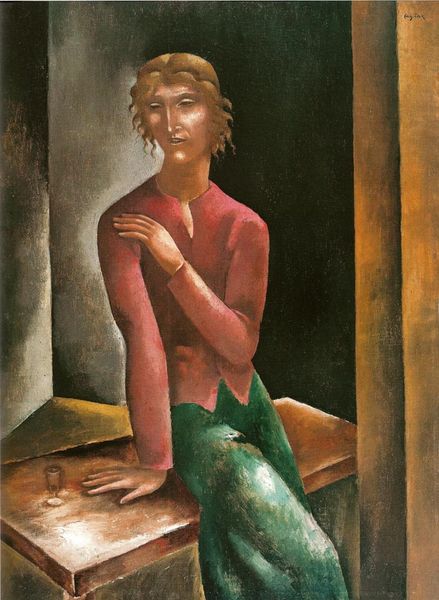
painting, oil-paint
#
portrait
#
painting
#
oil-paint
#
painted
#
oil painting
#
naive art
#
genre-painting
#
modernism
#
realism
Copyright: Philip Evergood,Fair Use
Curator: Welcome. Before us is Philip Evergood's painting from 1942, titled "Commotion," rendered in oil paint. What strikes you upon first viewing this portrait, Editor? Editor: It has a strange melancholy. The heavy industrial shapes behind the figure are oppressive, yet she appears placid, even expectant on those stairs. Curator: Precisely. Observe Evergood’s handling of form. He employs a flattened perspective, pushing the picture plane forward, thereby compressing space and amplifying the symbolic weight of each element—the figure, the staircase, the industrial chimneys. It establishes a tension, wouldn’t you agree? Editor: Absolutely. The tension stems not just from the formal arrangements, but from the sheer materiality. You see how the paint is thickly applied? Almost visceral. It evokes a sense of lived experience, hinting at the labor and environment surrounding the woman in the painting. It emphasizes the reality of making this art. Curator: A cogent point. The application emphasizes the underlying structure of feeling, in line with realist intentions. See how his distorted figures and colors telegraph not photographic realism but, rather, a psychologically charged representation, evocative of early Modernism and specifically the impact of war? Editor: Agreed. But consider further. Oil paints are themselves products, tied to extraction, refinement, industry—mirroring the chimneys in the background, linking subject, object, and medium. Also, observe that the stairs are at an angle, inviting us, maybe forcing us into the setting of a painted stage of industry where lives are made. Curator: You read the elements well, focusing on these key indicators and providing important social context to his aesthetic choices and to what he signifies. Evergood positions us as active interpreters of modern life and its social underpinnings. The woman acts as a mediating figure, a linchpin between the interior, private world and the monumental scale of industry. Editor: Her materiality implicates and asks us to rethink the space that women navigate between labor, commodity and the domestic realm, particularly in 1942 during wartime. Curator: Indeed. Ultimately, this work stands as a powerful visual document, urging viewers to reflect on the psychological toll that social structures exact on individuals. Editor: An effective encounter with labor, materiality, and life intertwined. Thanks.
Comments
No comments
Be the first to comment and join the conversation on the ultimate creative platform.
